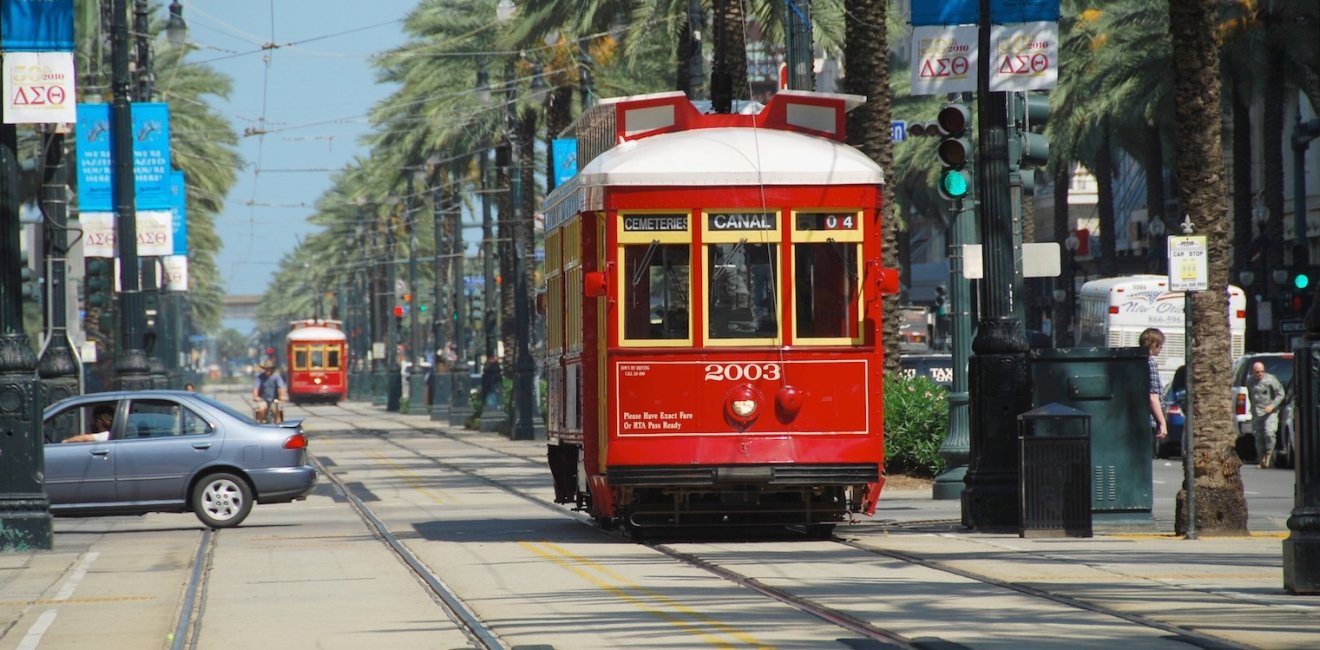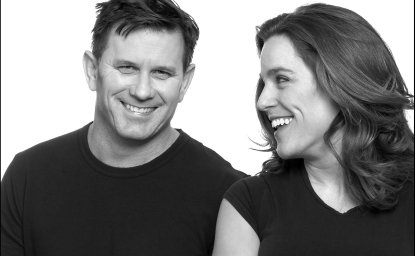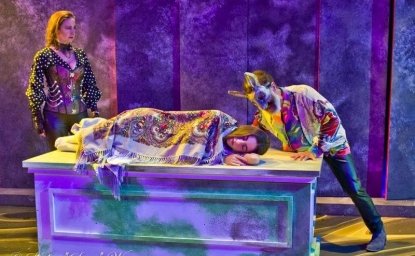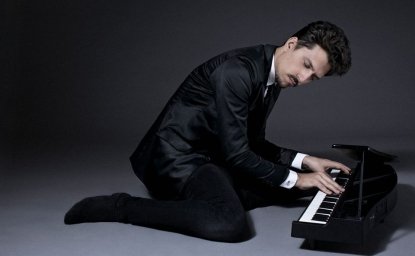
New Orleans in the Spring 2006 was a wounded city. Just months after the devastation of Hurricane Katrina and its aftermath, the city hardly functioned. Less than half the pre-storm population had returned, and much of the city’s infrastructure still lay in ruin. As Gary Rivlin noted in his book, Katrina: After the Flood:
Broken stoplights still dangled in parts of the central business district. Stores even in the center of town remained shuttered a year after Katrina. To reach the city’s economic-development office one entered through a side door, as the revolving doors out front were still boarded up. Shell was back, but Chevron announced it was moving its offices to higher ground in the suburbs. Traffic at the port was almost back to normal, but the city’s manufacturing base post-Katrina was almost non-existent. One survey found that twelve months after the storm, two in every three businesses were still closed. Shops catering to tourists complained that they were doing maybe half their pre-storm business. One local economist predicted that 40 percent of the city’s businesses would end up a casualty of Katrina.[i]
At the same time, something phenomenal was happening. New Orleans and the Gulf Coast had become the location of perhaps the largest private, voluntary charitable project in American history. Hundreds if not thousands of volunteers came to town to try to put what was broken back together again. Students, church groups, medical professionals, educators, musicians and artists came to town intent on saving the city and its unique culture. There never had been a civic charitable response of such magnitude to a disaster on United States soil.
While many of the volunteers and organizations came for specific purposes and limited periods, some decided to stay and commit to the city’s uncertain future. This was especially true of many young artists, musicians, dancers and chefs for whom New Orleans was too precious to lose.
New Orleans long has nurtured a distinctive culture rooted in the improvisational blending of its various human and natural ingredients. Tulane University historian Lawrence Powell captures its distinctive heritage in his city history, The Accidental City:
The kitchens may have been French, but the cooks were slaves, tossing in the same kettle culinary ingredients plucked from three continents. They received direction from the mistress of the house, but they were the ones who occupied the nexus of town and country. Not only did they cook the food but they purchased the groceries from petty tradesmen and footloose trappers, themselves slaves, and in the process, they skimmed off something extra – ‘lagniappe’, as later generations would describe it – in the form of income and victuals…. In other words, African slaves not only stirred the pot; they filled it too.[ii]
What was true of the pots and pans that hung over the stoves of this swamp metropolis proved equally true when New Orleanians put down their spoons and knives and picked up musical instruments, writing pens and paint brushes. Even Edgar Degas reinvented himself as a painter while visiting relatives in the city. The result has been a distinctive blend that has remained resistant to the forces shaping a broader American mass culture.
Two of New Orleans’ earliest suburbs--the nineteenth century neighborhoods of Faubourg Marigny and Bywater just downriver from the foundational French Quarter--that had been spared Katrina’s rising waters quickly became favored stomping grounds for idealistic and creative new arrivals. Two theater majors from Ohio’s Kenyon College--Andrew Kingsley and Andrew Vaught--were among them.
Kingsley and Vaught came with a belief that the theatrical arts should engage with society and with the issues of the day. Post-Katrina New Orleans cried out for discussions of the city’s endless challenges which could transcend existing social, racial, economic and political divisions. They saw theater as a means for framing the most difficult problems facing the city while engaging its numerous contentious communities. Their Cripple Creek Theatre Company was born out of an engagement with a traumatized city that seemingly was overwhelmed by insolvable problems.
Founded in 2006, the Cripple Creek Theatre Company has grown from two company members to more than ten currently with Co-Artistic Director Emilie Whelan, reflecting the animated diversity that has always marked New Orleans and its culture. The company has enjoyed artistic success and acclaim while producing nearly three dozen theatrical works of social importance. From their first production, Tennessee Williams’ The Kingdom of Earth, to their most recent--such as a lively production of Shakespeare’s The Taming of the Shrew--Kingsley and Vaught consciously used theater to explore the most difficult issues confronting their city in order to provoke social action.
Kingsley and Vaught held open auditions from the very beginning. At the outset, they needed flexibility to find the artistic talent required for their ambitious productions in a city slowly recovering from catastrophe. Their productions, including such works as Lanford Wilson’s Balm in Galead, Bruce Norris’s Clybourne Park, Henrik Ibsen’s An Enemy of the People, August Strinderg’s Erik the XIV and Jules Feiffer’s Little Murders, presented artistically challenging plays revolving around the most pressing social and political issues of the moment from the perspective of other times and places. Open auditions showcased new talent and reinforced connections between universally acclaimed works and their local community.
Kingsley and Vaught extended their outreach beyond the stage, bringing their work directly into communities rarely served by theater. They did so to discover talent, nurture audiences and sponsors, and more. Building on their goal of promoting civic and social engagement, they have positioned their productions to include workshops, creative collaborations and post-show conversations which serve to enhance audiences' understanding of the social issues addressed in the pieces they present. More strikingly, they tour to underserved audiences throughout the city and region. Their 2017 presentation of Taming of the Shew, for example, opened at the Dixon Correctional Institute in Jackson, Louisiana before being performed on the New Orleans Shakespeare Festival’s mainstage season. Previously, the company offered, a three-course maritime-inspired dinner by Chef Jessie Wightkin served between acts and produced works at the Saturn Bar before heading to the Bayou Playhouse in Lockport, Louisiana.
Not surprisingly given its origins in a hurt city and its mission of social engagement, the company has moved around quite a bit. In addition to temporary stages--including a residency at the Shadowbox Theatre housed in a former pharmacy along Marigny’s Saint Claude Avenue--the company most recently has found a home in the heart of the Saint Claude Arts District at the AllWays Theatre.
Settled into AllWays’ two story nondescript New Orleans roadhouse brightly painted in pastels, the company shares the stage with bayou blues burlesque shows, cabaret and dance nights, perfect partners for the social impact theater Kingsley and Vaught seek to cultivate. Saint Claude at this point is a bit too wide--and the buildings a bit too modes--to ever claim the moniker “charming.” The area is too industrial, the trees on the street’s neutral ground (median) too spindly and the sidewalks too cracked to ever be called “grand.” More importantly, the atmosphere bristles with creative energy, the sort of vitality produced by exciting artistic visionaries doing all they can to create a community constantly responding to the deepest and most painful challenges of the moment. Be it bayou blues burlesque or Shakespeare, dedicated artists such as Kingsley and Vaught are working in all variety of genres to insure that post-Katrina New Orleans remains a global creative hot spot.
Vaught challenges the company and himself to remain mindful of whom they serve in a world full of distraction. His goal has been to stimulate communication and engagement across the city’s numerous and complex disunions. In doing so, the community expands the company’s creative impulse, encouraging it to take on fresh artistic challenges. Beyond audience cultivation, the company’s Louisiana Stage Writers’ Workshop promotes inventive expression among imaginative people who, like Kingsley and Vaught, came to find their muse in the ever provocative city of New Orleans.
In 2013, the company presented Vaught’s original work Possum Kingdom, which told the story of an economic dystopia in which forest dwellers who scrape trees to sell their covering are in constant competition with killer possums who aggressively scavenger from the forest dwellers in a Darwinian competition for resources. The audience arrived at a backyard on St. Claude Avenue decked out in colored lights. When conversations stopped at the surprise of all the lights going out, ushers with flashlights emerged to escort the audience members down a winding path covered with roots and leaves to a cluster of seats facing some trees. There, in the dark interior of an otherworldly city block, the play began. At that moment everyone knew they could be no place other than New Orleans--a city where the phantasmagorically improvisational rules a world beset by constant struggle.
Artistic Visionaries and Community Creators
The power of the performing arts to nurture inclusive communities has been praised widely in recent years; so much so that “creative placemaking” is now seen as a powerful tool in community development. The supportive role of community in fostering artistic innovation is less acknowledged. This series highlights the work of visionaries for whom creating communities of students, protégés, audiences, and donors has become a strategic element in transforming their art
[i] Gary Rivlin, Katrina: After the Flood (New York: Simon & Schuster, 2015), p. 292.
[ii] Lawrence N. Powell, The Accidental City. Improvising New Orleans (Cambridge: Harvard University Press, 2012), pp. 97-98.
Author

Former Wilson Center Vice President for Programs (2014-2017); Director of the Comparative Urban Studies Program/Urban Sustainability Laboratory (1992-2017); Director of the Kennan Institute for Advanced Russian Studies (1989-2012) and Director of the Program on Global Sustainability and Resilience (2012-2014)
Explore More in Artistic Visionaries and Community Creators
Browse Artistic Visionaries and Community Creators
Mark and Susan Marie Rhea and Irish Theater

Hugo and Rebecca Medrano and Hispanic Theater

Hernán Jacinto

